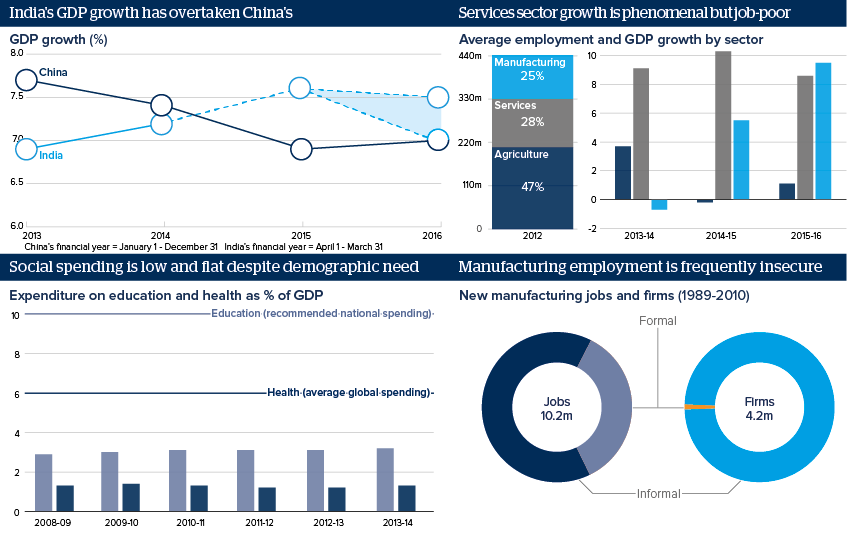India's structural malaise is at odds with GDP growth
India's economic activity appears to have traded quality for quantity

Source: WHO, World Bank, India’s Central Statistical Organisation, Economic Survey 2015-16, UNESCO
Outlook
Global scepticism about India's spectacular GDP growth rate will rise as the deeper structural weaknesses of the economy increasingly come to light. The 2016-17 budget has prioritised fiscal consolidation over public spending despite the enormous need for increasing investment in human infrastructure, especially health and education.
Organised manufacturing is impeded by internal policy constraints and tepid global demand, but the government's 'Make in India' manufacturing campaign has yet to move past rhetoric.
As important state elections between now and early 2017, and the 2019 national elections, draw closer, several promises of Prime Minister Narendra Modi's government are likely to be unfilled: notably, promoting inclusive development, putting India on track for sustainable growth and creating millions of quality jobs.
Impacts
- Harsh economic realities will intensify Modi's political difficulties; a second term in 2019 is not guaranteed.
- Services will dominate the economy, as long as large-scale manufacturing is uncompetitive and unfeasible.
- Agriculture will suffer due to continued bad weather, exacerbating political and social tensions triggered by joblessness.